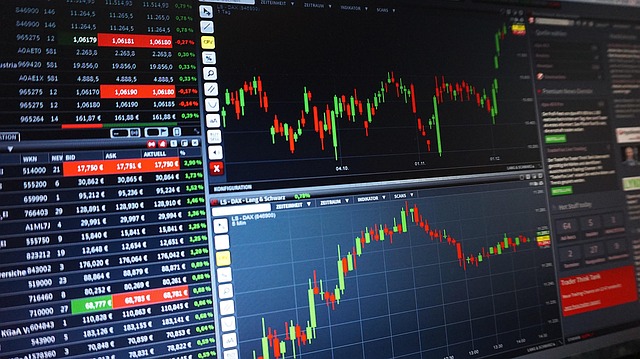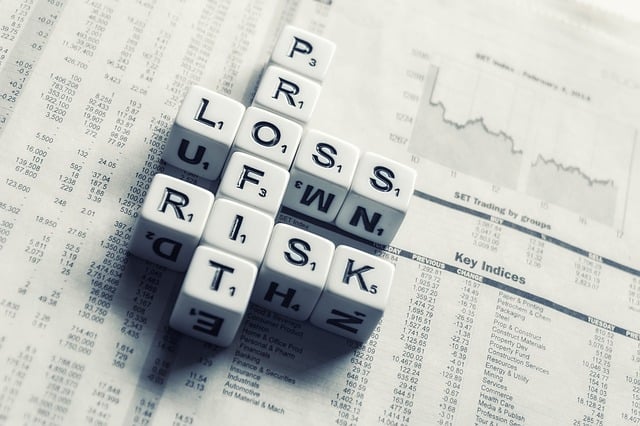Trading Volume Analysis and Interpretation: An In-Depth Guide for Traders and Investors
Author: Jameson Richman Expert
Published On: 2025-08-02
Prepared by Jameson Richman and our team of experts with over a decade of experience in cryptocurrency and digital asset analysis. Learn more about us.
Understanding trading volume analysis and interpretation is fundamental for traders and investors aiming to navigate the complexities of financial markets effectively. Especially in the rapidly evolving cryptocurrency space, volume acts as a vital indicator of market strength, momentum, and potential reversals. Over years of hands-on experience and rigorous research, I have come to appreciate that volume is one of the most undervalued yet powerful technical indicators. Early in my trading journey, I relied heavily on price charts alone, often missing critical signals that volume data could reveal. It was through extensive backtesting, pattern recognition, and studying market cycles that I realized how volume complements price action by providing insights into underlying market sentiment, institutional participation, and the sustainability of trends. This comprehensive guide explores the nuances of trading volume analysis, its interpretation, and strategic applications to enhance your trading edge with actionable insights and advanced concepts.

What is Trading Volume and Why It Matters?
Trading volume represents the total number of units—be it shares, cryptocurrencies, futures contracts, or other financial instruments—that are traded within a specific period, such as minutes, hours, or days. It is a direct measure of market activity and investor interest, serving as a barometer of liquidity and participation. High volume typically indicates strong conviction behind a price move, often confirming the legitimacy of a trend and reducing the likelihood of false breakouts. Conversely, low volume can suggest indecision, lack of interest, or potential exhaustion, signaling that a price move may lack sufficient support for continuation.
For example, a substantial upward price movement accompanied by high trading volume often signifies institutional buying, news-driven interest, or broad market participation. Conversely, a similar move on low volume might be a temporary spike or a false breakout. Ignoring volume can lead traders to make decisions based solely on price, increasing vulnerability to misleading signals. Integrating volume analysis into your trading process adds a vital layer of confirmation, helping distinguish between genuine trend continuations and deceptive price spikes.
Furthermore, analyzing volume over different timeframes reveals shifts in trader behavior and market participation. Persistent high volume during a bullish rally may indicate accumulation by large investors, while sporadic volume spikes could be the result of speculative activity or market manipulation. Recognizing these subtleties enables more precise market timing, improved risk management, and better strategic positioning.
Core Concepts in Volume Analysis
The foundational principle of volume analysis is that volume confirms or refutes price trends. An uptrend supported by increasing volume suggests rising buyer commitment, reinforcing the trend's strength. Conversely, if prices ascend but volume diminishes, it indicates waning momentum, raising caution about potential reversals or sideways consolidations. Similarly, during a downtrend, declining volume may signal exhaustion among sellers, hinting at a possible reversal or pause in selling pressure.
Volume spikes—sharp, sudden increases in trading activity—are especially significant. They often mark critical moments such as breakouts, breakdowns, or trend reversals. For instance, in volatile cryptocurrency markets, a volume surge during a decline may indicate capitulation—where panic selling exhausts selling pressure—potentially marking a bottom. Recognizing these spikes allows traders to anticipate shifts before they become obvious through price action alone, providing a valuable strategic advantage.
Advanced volume concepts include analyzing volume patterns across multiple timeframes, which can reveal underlying market intentions. For example, a consolidation phase with low volume might precede a breakout, while irregular or anomalous volume patterns could signal market manipulation or false signals. The idea of "volume climax"—where volume reaches extreme levels—often signals exhaustion in the current trend, either at a reversal point or the start of a new trend cycle.
Tools like On-Balance Volume (OBV), Volume Weighted Average Price (VWAP), and the Chaikin Money Flow indicator help quantify buying and selling pressure, providing clearer validation for trend signals. These tools are invaluable for discerning subtle shifts in market sentiment and confirming technical patterns.
Practical Interpretation of Trading Volume
Combining volume analysis with other technical tools enhances decision-making accuracy. For example, pairing volume with candlestick reversal patterns—such as bullish engulfing, hammer, or shooting star—can strengthen signals of trend reversals or continuations. A bullish engulfing candle accompanied by a volume spike is a robust indicator of institutional or collective buying interest, increasing confidence in an upward move.
Another critical aspect is divergence analysis: when price makes new highs or lows but volume does not follow suit, it signals potential trend weakening. For instance, a new high in price with declining volume suggests the rally may be losing momentum, warning traders of an impending correction or reversal. Early detection of such divergences can prevent entering trades that are likely to fail.
Volume validation of breakouts is vital. A breakout above resistance or below support levels backed by high volume is generally more reliable, reducing the risk of false breakouts ("fakeouts"). Conversely, breakouts on low volume should be approached with caution, as they lack the necessary market conviction to sustain the move.
Monitoring volume during consolidation phases can also provide clues about upcoming volatility. For example, decreasing volume during sideways price action often precedes a significant move, as traders await confirmation. Increasing volume during consolidation may indicate accumulation (preparing for a rally) or distribution (preparing for a decline), offering early signals of market direction.

Using Volume to Detect Market Cycles and Bottoms
Market cycles—comprising accumulation, markup, distribution, and markdown phases—are heavily influenced by volume patterns. During bear markets, persistently low volume often indicates capitulation, where investors have given up, potentially signaling a market bottom. A sudden spike in volume after a prolonged decline can suggest a shift in sentiment, marking the beginning of a new bullish phase. Recognizing these shifts allows traders to position themselves advantageously.
Similarly, during bullish trends, declining volume may signal exhaustion, hinting at an impending correction or reversal. For example, observing a volume surge during a dip combined with oversold conditions in RSI or other momentum indicators can signal a low-risk buying opportunity. Conversely, a decrease in volume during an uptrend might warn of weakening momentum, prompting traders to tighten stops or consider short-term reversals.
My experience confirms that these volume patterns can significantly enhance the timing of entries and exits. For deeper insights into market bottoms and cycle analysis, I recommend resources like this detailed article on crypto bottoms.
Additionally, volume analysis helps identify accumulation phases—periods when "smart money" gradually builds positions before a significant move—often characterized by subtle increases in volume. Conversely, distribution phases are marked by increased volume during sideways movement, signaling potential reversals.
Supporting Technical Indicators with Volume
Integrating volume with other technical indicators provides a comprehensive view of market dynamics. Moving averages, RSI, MACD, Bollinger Bands, and Fibonacci retracements, when combined with volume analysis, help confirm or question price signals. For example, a sudden volume spike coupled with RSI entering oversold territory strengthens the case for a reversal or buying opportunity.
Similarly, MACD crossovers accompanied by volume surges often indicate genuine trend shifts rather than false signals. Advanced traders analyze market cycle indicators—such as Wyckoff phases or Elliott Wave counts—alongside volume to optimize entry timing. During accumulation phases, volume often consolidates before a breakout, signaling institutional interest building up. Recognizing these patterns helps position oneself advantageously, especially in volatile markets like cryptocurrencies.
Additional tools like the Klinger Oscillator or the Money Flow Index (MFI) can further refine your understanding of money flow and supply/demand dynamics, providing early warnings of potential reversals or trend continuations. These indicators help detect divergence between price and volume, which often precede major market moves.
For a deeper dive into cycle and bottom analysis, review this comprehensive guide on market cycles and bottom identification.
Practical Tips for Trading Volume Effectively
- Validate trends: Always compare volume with price movements. Rising prices with increasing volume confirm trend strength, while rising prices on declining volume suggest caution.
- Identify spikes: Watch for sudden volume surges as potential signals of breakouts, breakdowns, or reversals. Use volume filters—such as exceeding recent averages—to avoid false signals.
- Monitor divergences: Pay attention to divergences between volume and price; these often precede reversals or confirm breakouts, especially when supported by other indicators.
- Combine tools: Use volume alongside RSI, MACD, candlestick patterns, and chart formations to improve accuracy and filter out noise.
- Timing market cycles: Recognize volume patterns indicating bottoms or tops—especially in extended phases—to optimize entry and exit points.
- Be cautious of manipulation: Watch for irregular volume spikes that may be the result of pump-and-dump schemes or wash trading, common in less regulated markets like cryptocurrencies.
To further refine your analysis, explore resources like this real-time crypto bot analysis, which incorporates volume signals for timely market insights.

Lessons from Real-Life Trading Experiences
Throughout my trading career, neglecting volume confirmations has led to costly mistakes. I vividly recall a false breakout where I entered a position expecting a strong rally, only to be caught in a swift reversal because volume was not supporting the move. This experience underscored the importance of volume as a confirmation tool. Since then, I prioritize volume analysis to validate price signals before acting.
Patience and discipline are key. Waiting for clear volume signals—such as high-volume breakouts or divergence patterns—has saved me from unnecessary losses. Developing a routine of comprehensive analysis, including volume, has been instrumental in progressing from a novice to a seasoned trader.
Maintaining a trading journal documenting volume and price patterns has improved my recognition of early warning signs and market sentiment shifts over time.
Conclusion
In summary, trading volume analysis and interpretation are essential components of a robust trading strategy. Volume provides insights into market strength, potential reversals, and the validity of price movements. Recognizing volume patterns, divergences, and spikes—especially when combined with other technical indicators—can significantly improve market timing and risk management. My evolution from overlooking volume to integrating it into every trade underscores its critical importance. Continuous learning, disciplined analysis, and strategic application of volume insights will elevate your trading effectiveness. Leverage the comprehensive resources linked throughout this article and commit to ongoing education in technical analysis and market cycles. Remember, in trading, volume is not just a number—it’s the pulse of the market, revealing the underlying energy behind every price movement.